Nationality New Zealand Name Konstantin Dimopoulos | Role Artist | |
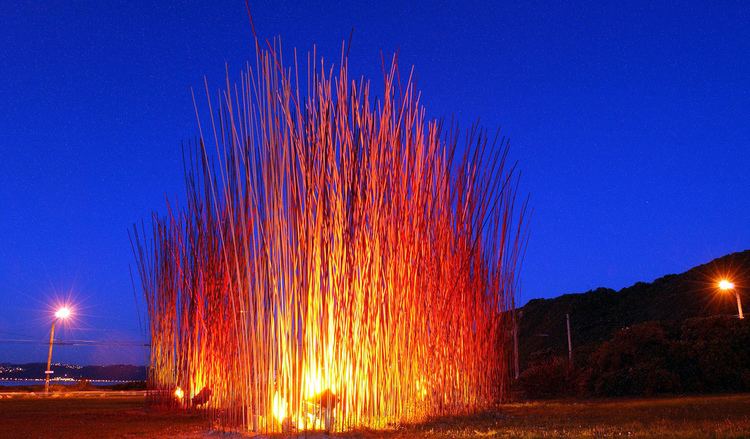 | ||
Full Name Constantin Dimopoulos Born 20 December 1954 Port Said, Egypt Known for sculpture, installation art Awards Civic Initiative Award for Sculpture of Wellington, New Zealand, 2002; Kinetic Art Organisation International Award for Public Kinetic Sculpture, 2004 Spouse Adele Dimopoulos (m. 1988) Education Victoria University of Wellington, Chelsea College of Arts | ||
The blue trees can art save the world konstantin dimopoulos at tedxsacramento
Konstantin Dimopoulos (born Constantin Dimopoulos 20 December 1954) is a sculptor, installation and performance artist.
Contents
- The blue trees can art save the world konstantin dimopoulos at tedxsacramento
- Konstantin Dimopoulos Kinetic Sculptor Artist
- Early life
- Career
- Sculptures and Public Art
- The Blue Trees
- Installation art
- References
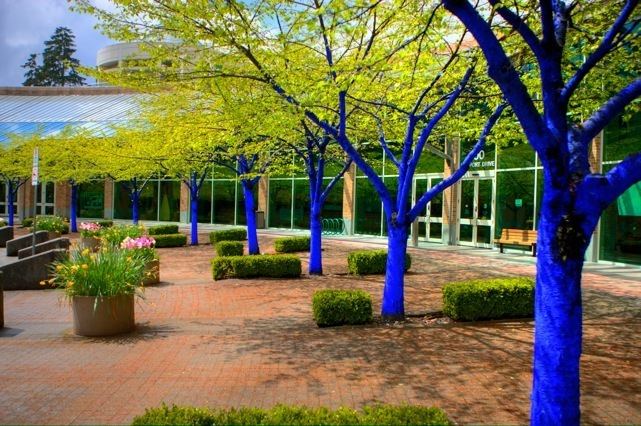
Konstantin Dimopoulos - Kinetic Sculptor Artist
Early life
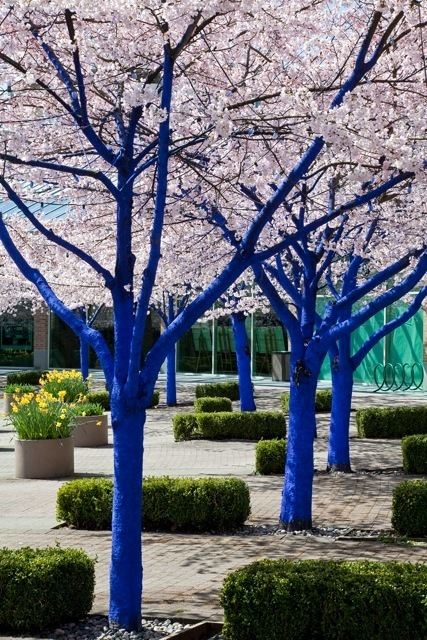
Born in Port Said, Egypt Dimopoulos spent the first eight years of his life living in Ismailia before moving with his family to Wellington, New Zealand. Although born in Egypt, Dimopoulos was raised in a Greek home. This move by the family across the world to a different country, culture and language has influenced his artwork, in particular his public art installations. He completed a Bachelor of Arts in sociology at Victoria University, Wellington and later studied part-time at the Chelsea School of Art in London. In 2003 he moved with his family to Melbourne, Australia where he now lives.
Career

The powerful and often thought provoking art-making practices of Konstantin Dimopoulos have attracted international attention. The artist investigates globally relevant questions related to ecology and the human condition, presented in temporary installations at public galleries, museums and outdoor sites throughout Australia and New Zealand, North America, Europe and Japan. His sculptures can be found in public spaces and private collections. Paintings, drawings and prints complement the spatial works.

Dimopoulos’s first exhibition was in 1981, The Passioned, a series of "large, lively and bold linear oil paintings". The exhibition was followed by a second solo show before he travelled to London and Europe. On returning to Wellington Dimopoulos created works for his 1989 exhibition Mind At The End Of Its Tether, a series of dark, figurative oil paintings about the men working in the printing room of Wellington's daily newspaper. "The artist created large canvases that were brutal but beautiful statements of man's survival in sterile and hostile places. Superimposed on a pastiche of crumble-textured surfaces, with the materialising bodies all but lost in the polluted white-on-colour of industrial eternity."
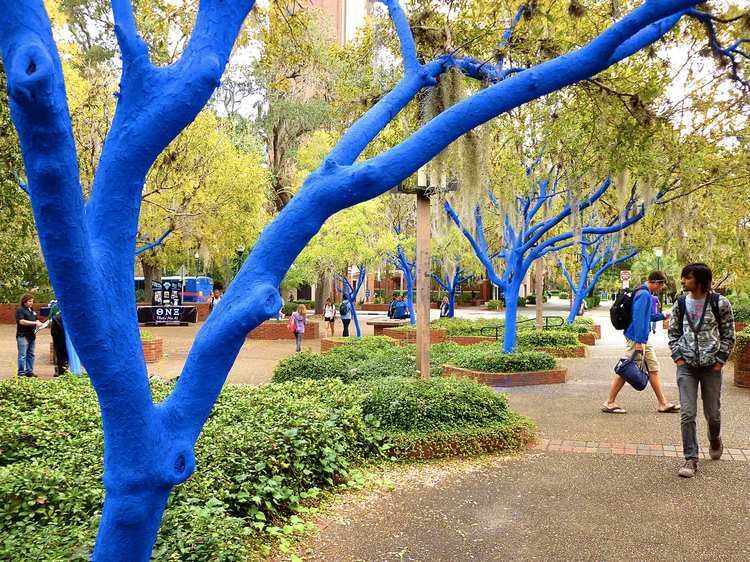
Dimopoulos has exhibited nationally and internationally since 1981, including representation by the Conny Dietzschold Gallery in Sydney and exhibitions at the art fairs of Cologne, Auckland and Melbourne. Honors include the inaugural Civic Initiative Award for Sculpture of Wellington (2002) and the Kinetic Art Organisation International Award for Public Kinetic Sculpture (2004). The Blue Trees was named as one of the Top 100 Activism Trends (2012) for ideas that change the world, and was a finalist for the global Index: Design to Improve Life (2013) and the British Climate Week (2014) awards.
Sculptures and Public Art

In the 1990s Dimopoulos began to explore the dynamics of form through the medium of sculpture. Beginning with his early works Dimopoulos experimented with the repetition of individual elements. Flexible shafts of carbon fiber became his new material of choice for purely linear, abstract kinetic sculptures that interact with the wind. His pared-down color palette led to vivid color choices in primarily monochromatic applications, also visible in the large-scale steel sculptures.
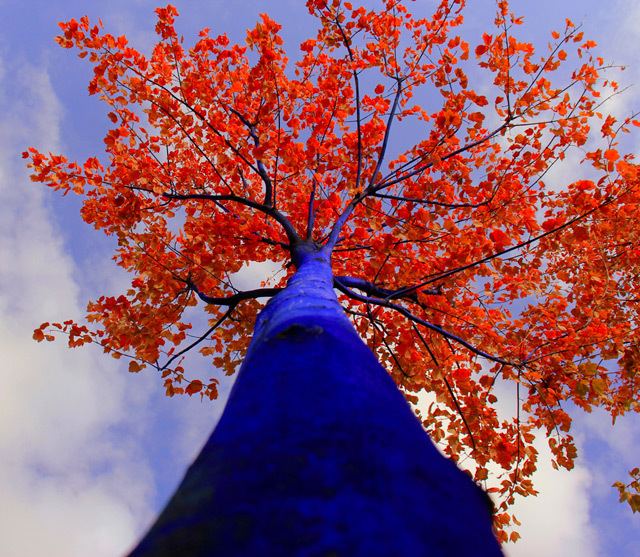
In 2001 he was commissioned by the Wellington Sculpture Trust to create "Pacific Grass", the first in the Meridian Energy Wind Sculpture Walk series. "Pacific Grass transforms a traffic island into a beacon of vertical bands of colour that undulate and pulsate with each gust of wind. Its resin rods harness and respond to the extremes of this site, making Pacific Grass memorable as it ushers the traffic around the circumference of the roundabout."

In 2004 Dimopoulos was invited to create the sculpture Kete for Connells Bay Centre for Sculpture on Waiheke Island, New Zealand. This was followed in 2005 by Red Ridge, a monumental sculpture for a private golf course in Arrowtown, New Zealand. Red Ridge caused controversy when the property owner had the work installed without first obtaining local government consent. In downtown Melbourne, Australia's busy Federation Square he installed Red Centre in 2006.
Dimopoulos has created sculptures for public and private collections in Australia, New Zealand, the United States and United Arab Emirates. Public art commissions in the United States include "Red Echo" (2010) in Palm Springs, California (2010), "Red Stix" at Home Plate Plaza, Seattle, Washington (2012), "Golden Field" at the Jean Oxley Public Service Center in Cedar Rapids, Iowa (2012) and 'BLUE", at a private residential complex in Casa Mira, San Diego, California (2014). The Red Forest in Denver, USA was voted Westword's Best New Public Art 2011. "RED" was installed in the Middle East in Abu Dhabi, United Arab Emirates (2010).
The Blue Trees
The Blue Trees environmental art installation prototype, Sacred Grove – The Blue Forest afforestation art action, was commissioned by the City of Melbourne in 2005/06. Dimopoulos sees his The Blue Trees as an ephemeral performance art installation using transformation to provoke discussion about the issue of global deforestation. The Blue Trees is an ongoing project and has been realized in partnership with cultural and environmental organizations, cities and hundreds of volunteers. Stands of trees, either mature or saplings, are colored with an environmentally safe, ultramarine blue pigment to call attention to global deforestation.
Chronology of The Blue Trees
2016 Jacksonville Zoo, Jacksonville, FL USA
2015 Kuenzelsau Environment Installation at ZIEHL-ABEGG, Germany
2015 Vancouver Biennale, Canada
2013 City of London Festival, England
2013 Houston, Texas USA
2013 Atlanta, Georgia USA
2013 Albuquerque, New Mexico USA
2012 Sacramento, California USA
2012 Florida University, Gainesville, Florida USA
2012 Westlake Park, Seattle, Washington USA, and The Burke Gilman Trail, Kenmore, Washington USA
2011 Brick Bay Sculpture Trail, New Zealand
2011 Vancouver Biennale, Canada
2005 Sacred Grove – The Blue Forest, Afforestation Art Action, Melbourne, Australia
2916
Installation art
Installations at public gallery and museum venues explore the state of contemporary civilization in a global society. In New Zealand, Dimopoulos installed "Kroc and the Creation of the Big Byte" (The Physics Room, Christchurch 1997) in a visual essay that profiled the development of the McDonald’s corporate image. "Level 4 – environmental ecocide" (Rotorua Museum of Art, 1997 and Manawatu Art Gallery, Palmerston North 1998) related to the highest degree of laboratory containment for experimenting with micro-biological organisms. "Works from a Savage Garden – environmental ecocide" (Suter Art Gallery, Nelson 1999) investigated the identity of a geographical virus by interpolating a correlation between humanity and gorse, a thorny invasive plant.
More recent installations in Australia highlighted cultural appropriation, realized in "Black Parthenon", an installation on cultural appropriation, presented 2009 as part of the Melbourne Festival of Light (Federation Square, Melbourne 2009). Birdcloud (Busan Biennale, Korea 2013) referenced the importance of social media within the context of global uprisings. "The Purple Rain" addresses homelessness (Melbourne 2015).
